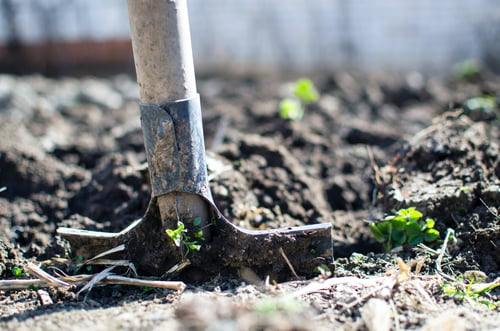Insights
Regenerative Agriculture: A New Name for an Ancient Practice
 Any good relationship involves a certain degree of give and take. Farming is no different. As plants grow they take moisture and nutrients from the soil. In order to maintain soil fertility, those elements must be returned to the soil for the growth cycle to continue. Ancient farmers knew that if soil became depleted, it would no longer yield the crops they relied upon for nourishment. According to Patagonia.com, farmers in Asia and Japan have been “feeding” their soil with mulch and planting soil-building crops for thousands of years. This practice still holds true today. Soil enhancing techniques are currently referred to as regenerative agriculture—a new name for an ancient practice.
Any good relationship involves a certain degree of give and take. Farming is no different. As plants grow they take moisture and nutrients from the soil. In order to maintain soil fertility, those elements must be returned to the soil for the growth cycle to continue. Ancient farmers knew that if soil became depleted, it would no longer yield the crops they relied upon for nourishment. According to Patagonia.com, farmers in Asia and Japan have been “feeding” their soil with mulch and planting soil-building crops for thousands of years. This practice still holds true today. Soil enhancing techniques are currently referred to as regenerative agriculture—a new name for an ancient practice.
Soil ecosystems are both “complex and dynamic.” Keeping it basic, replenishing soil involves two main strategies: retaining moisture and retaining organic materials rich in nutrients plants need to grow. Additionally, these practices that create healthy soil also lead to “carbon sequestration,” which means storing of carbon in the soil and plants. This leads to a decrease in available atmospheric carbon in the form of greenhouse gasses, which plays a role in global warming and climate change.
Regeneration International reports that these practices are more than beneficial, they are necessary for self-preservation. The organization states that soil scientists anticipate that if things remain unchanged, within 50 years the earth could see serious deterioration of soil and a negative impact on food production and quality. These conditions will impact our ability to feed the growing global population, as well as increasing global warming.
The Patagonia article lists six different regenerative agriculture farming techniques that can help accomplish the change needed:
Organic farming
Organic farming practices omit the use of chemical nitrogen fertilizer, opting instead to tap into the nitrogen-fixing abilities of pulse crops. Pulse crops form a symbiotic relationship with soil microbes to access nitrogen in the environment and convert it to organic nitrogen compounds that are readily available to plants. The process immediately benefits the plant and enriches the soil over time. Organic farming practices also avoid the use of synthetic pesticides and herbicides.
Use of cover crops
Cover crops are used in addition to primary cash crops to increase the amount of organic matter in the soil. While fallow fields erode and lose moisture, fields seeded with cover crops work in partnership with nature. Pulse cover crops, which fix nitrogen, enhance the soil, and the presence of additional organic matter sequesters carbon and drastically reduces soil erosion.
Composting
Compost is made from broken down farm waste, which is added to the soil to improve soil health. It also serves as a natural fertilizer and pesticide for the soil. As an added plus, the addition of organic matter increases the moisture content of soil, which makes farmland and crops more drought-resistant.
Crop rotation
Rotating crop varieties from year to year changes the demands being placed on the soil, while breaking life cycles of diseases and pests that prefer specific crops. According to The Rodale Institute, crop rotation greatly improves soil health and minimizes the presence of disease, pests and weeds, when compared to single crop planting.
Intercropping
Planting multiple crops in close proximity creates a microbiome with altered blooms and harvests that are designed to foster a mutually beneficial environment for all the crops. Additional benefits include weed suppression, resistance to pests and diseases, attraction of beneficial pollinators, and improvement of soil structure. When pulse crops are included, nitrogen-fixation also improves the nitrogen content in the soil.
Low to no tilling
While the practice of tilling overturns and disturbs soil, reducing this practice can lead to increased moisture and organic material in the soil. According to Lentils.org, some farmers leave plant stubble in the soil after harvest to prevent soil erosion. New planting techniques, such as blowing seed directly into untilled soil, allow the field to resist erosion that traditional plow and plant strategies create.
Regenerative agriculture has come full circle, as modern agriculture reverts back to ancient practices that enhance soil and combat climate change. Foodtank.com lists 17 organizations across the globe that promote regenerative agriculture, including Regeneration International (regular attendee at the United Nations Climate Summit) and the Rodale Institute in Pennsylvania.